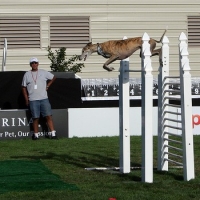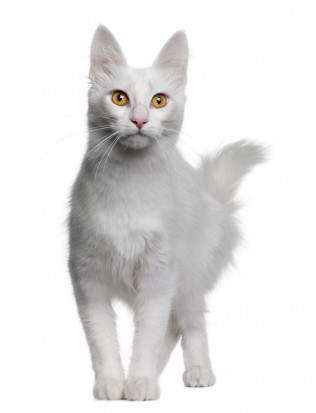
Residing in the Conifer and Broadleaf forests east of the Amur River, the Siberian Tigers are solitary cats that enjoy a relatively undisturbed ecosystem devoid in large parts of human activity. Oc...
Residing in the Conifer and Broadleaf forests east of the Amur River, the Siberian Tigers are solitary cats that enjoy a relatively undisturbed ecosystem devoid in large parts of human activity. Occupying huge territories of up to four thousand square miles, these Amur Tigers are often on the move, covering large distances in search of prey in their isolated wilderness. One Siberian Tiger was once recorded to cover over six hundred miles in the space of three weeks in search of food. The great cat hunts a variety of animals including moose, roe deer, sika deer, musk deer and goral, though red deer and wild boar form the bulk of its diet.
Opportunistic predators, the tigers are known to take even rabbits, hares, pikas and fish (usually salmon) at times. The undisputed king of carnivora, the Siberian Tiger spares not even the Great Russian Brown Bear from its predatory activities. The cats pull out the bears while they are hibernating and attack and kill them. At other times, brown bear kills have been recorded in the open, displaying the superiority of the tiger over the bear as the apex predator on land. The Asiatic black bears are not given any respite by a hungry tiger either. The cunning cat is known to imitate black bear sounds to attract and hunt them.
Even resilient pack animals such as wolves have been nearly exterminated by the tigers. A stalk and ambush predator, the Amur Tiger despite its great power still only succeeds in ten to fifteen percent of hunting attempts. The cat prefers to creep up to ten to twenty five meters of the prey animal before rushing and pouncing upon it, moving at speeds of up to 80 km/hr in its charge. Smaller prey animals are killed by a bite on the nape of neck that breaks the vertebrae and severs the spinal cord. Larger game is brought down by a bite on front of the neck that crushes the windpipe and suffocates the prey. Needing around twenty pounds of meat daily to survive in the wild, the tiger can consume about sixty to hundred pounds in one setting. The kill is often cached, usually near a water body and the cat has been known to return to carcasses to complete its feed.
The Siberian Tiger inhabits the Boreal forests in Far Eastern Asia, residing largely in Russia but also reported in China and North Korea. Panthera Tigris Altaica, it is seen largely in the Amur-Ussuri region of Primorsky and Khabarovsky Krai. Its range has shrunk drastically in the past hundred years and is now a mere fraction of its past domain.
The tigers are known to mate at any time during the year. The receptive female advertises her presence by leaving urine and scratch markings on trees. She is in estrus typically for three to seven days during which the pair mates several times. Like all big cats, the courting individuals focus less on hunting during this time and are particularly hostile to any intruders. Up to six cubs are born after a pregnancy lasting between three to three and a half months, though three to four is the average litter size. Blind and helpless they are sheltered in a den by the ever watchful mother who seldom leaves them during the early weeks, going out only for hunting.
The young open their eyes at two weeks and begin to venture outside at around three months. They are weaned off at around six months and begin to accompany their mother at her hunting trips at this age. Small prey is successfully taken down by the cubs at less than one year of age, and large prey at twice that age. They stay with their mother at up until three to five years of age after which they begin to venture and establish their territories and fend for themselves. Males generally move farther away from their realm, making them easier targets for poachers. As a result adult male tigers are outnumbered by females three to one on average. Lifespan is known to be up to twenty five years.
Amur Tigers were freely hunted in the early part of this century, bringing them to near extinction in most territories. In 1947 hunting was outlawed in the former Soviet Union. Still the tiger continued to suffer at the hands of poachers who made heavy profits by selling the body parts to Chinese traditional medicine makers, earning up to fifty thousand dollars with one tiger. The collapse of Soviet Union accompanied with the breakdown of law and order infrastructure had a particularly adverse impact on the tiger population whereby nearly sixty tigers were reputedly killed yearly by poachers in the few years following 1989. In 1992, The Siberian Tiger Project was founded. This marked the beginning of a turn around in the fate of tiger. In 1993, Chinese Government declared the use of tiger parts for medicinal purposes to be illegal.
In the following years, vigilant monitoring and study resulted in the stabilization of tiger numbers in the wild. Regular patrols were undertaken to deter the poachers and individual tigers were studied to better understand the subspecies and reduce its mortality in its natural habitat. Another successful step was launching of Operation Amba in Russia that continues to protect the Siberian Tigers through collaboration of law enforcement agencies and interaction with local people. Its mission is to neutralize tiger traders and attack and eliminate poaching rings. It has been largely successful in seizing many poaching materials and saving a number of tiger cubs. As a result of these tireless efforts of forest rangers and scientists, today the population of Siberian Tigers in the wild is believed to be around five hundred individuals and this is merely the number in Russia. In fact the Siberian Tiger is the only tiger subspecies whose population is believed to be on the increase. The impressive recovery of the Siberian Tiger is often used as a model plan to save other species.
Article Tags: Siberian Tiger, Siberian Tigers, Tigers Were
 Important Questions To Ask The Breeder Of Your Potential New Yorkshire Terrier
Important Questions To Ask The Breeder Of Your Potential New Yorkshire Terrier
 Love Me, Love My Dog - Introducing A New Partner Into Your Dog’s Home
Love Me, Love My Dog - Introducing A New Partner Into Your Dog’s Home
 Who Else Wants A Easy Way To Teach Your Canine Tricks
Who Else Wants A Easy Way To Teach Your Canine Tricks
 All About The Extremely Rare New Guinea Singing Dog
All About The Extremely Rare New Guinea Singing Dog
 Wool Block In Rabbits
Wool Block In Rabbits
 What To Look For In The Sire Of A Potential Litter
What To Look For In The Sire Of A Potential Litter
 Gorgeous White Coated Cats – But Are They Prone To Deafness?
Gorgeous White Co
Gorgeous White Coated Cats – But Are They Prone To Deafness?
Gorgeous White Co
 A Guide To Hen Houses
A Guide To Hen Ho
A Guide To Hen Houses
A Guide To Hen Ho
 Yorkiepoo, Yorkapoo, Yoodle ... A Unique Mixed Breed Dog
Yorkiepoo, Yorkap
Yorkiepoo, Yorkapoo, Yoodle ... A Unique Mixed Breed Dog
Yorkiepoo, Yorkap
 Canine Dam Milk Production And Drying Up Timescales
Canine Dam Milk P
Canine Dam Milk Production And Drying Up Timescales
Canine Dam Milk P
 Does The Italian Greyhound Make For A Good Pet?
Does The Italian
Does The Italian Greyhound Make For A Good Pet?
Does The Italian
Copyright © 2005-2016 Pet Information All Rights Reserved
Contact us: www162date@outlook.com